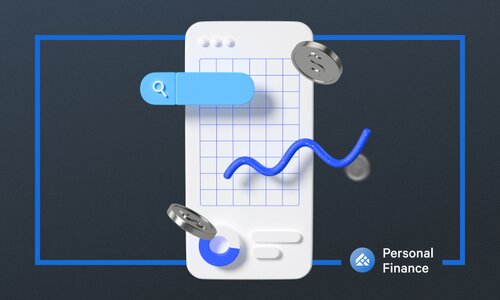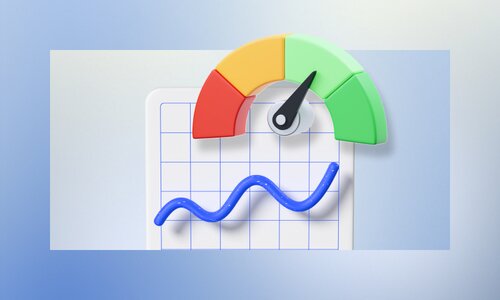Disclosure
The opinions expressed in this article are for general informational purposes only and are not intended to provide specific advice or recommendations for any individual or on any specific security or investment product. The views reflected in the commentary are subject to change at any time without notice.
View Arrived's disclaimersWhen it comes to personal finance goals, there’s no beating the thrill of owning a new home. A 2019 survey by Wells Fargo revealed that for 70% of Americans, owning a home is seen as a sign that someone is a “successful adult,” on par with having a career (73%). Homeownership is much more widely equated with being a successful adult than having children (34%) or getting married (32%).
It’s no surprise, then, that nearly half of Americans who are saving to buy or renovate a home (49%) have done work outside their primary job to supplement their income, such as selling items online, starting a small side business, driving for a rideshare company, and dog sitting or walking. But really, how much is a down payment on a house? Here’s what you need to know.
What Is a Down Payment?
A down payment is an upfront cash deposit when buying a home. If you’ve decided to borrow to purchase a property, a large portion of the home’s purchase price will be paid through your home loan, which you will pay off over time. However, most mortgage lenders require you to pay some of this amount, typically between 5% and 20%, in upfront cash to represent your ownership stake in the property.
The more you can put towards the down payment, the better, but it will come down to your finances and circumstances.
According to the Home Buyers and Sellers Generational Trends report by the National Association of Realtors (NAR), the median down payment for a home in 2022 was 13% of the home’s sales price.
How Much Down Payment Should You Save?
Ideally, you’ll want to put as much as you can towards the down payment. However, this is not always possible. For many buyers, the National Association of Realtors Report shows, saving for a down payment was the most challenging step in the home buying process, with 13% of all buyers and 27% of younger millennials citing it as the top difficulty.
While there are many benefits to having a larger deposit, saving that deposit can also take months and sometimes years. Here’s what to consider:
- Your savings and budget: The amount you have in savings can be a good starting point for determining what a realistic down payment amount looks like.
- Closing costs: The down payment is not the only cost you’ll incur while purchasing a house. Closing costs are essential to factor into your budget, and the higher the closing costs, the less money you may have available for the down payment.
- The home’s value: If you opt for a smaller property, you can take out a smaller mortgage and put a more significant amount towards the down payment. However, if the home you’re buying is right at the edge of your affordability, you may have to go with a lower down payment.
- Your credit score and credit history: The terms of your mortgage loan will come down to a number of factors, including your income, assets, cash flow, credit score, and debt-to-income ratio (DTI). Some lenders will require larger down payments if you have a bad credit score or a history of missed payments.
A 20% down payment has been held as the gold standard for home buying for a long time. However, it’s important to note that while a 20% down payment can be very beneficial, you may qualify for a home loan with a smaller down payment.
What if You Can’t Put Down 20%?
When you purchase a home, the down payment you make towards the home serves as your equity in the home. Lenders look at a metric called the loan-to-value ratio (LTV) for mortgage financing, and when you have a down payment of 20%, your loan-to-value ratio works out to higher than 80%, making you a less risky bet.
You may have options if you’re having trouble putting together a 20% deposit or even a deposit.
Private mortgage insurance (PMI)
If your down payment is less than 20%, many lenders will require you to pay private mortgage insurance, an additional fee that covers the insurance cost for the lender to offset the risk of you defaulting on the mortgage loan. PMI is typically added to your monthly mortgage payment.
Down payment assistance
Several down payment assistance programs are available to help first-time homeowners get on the property ladder. These programs can offer free money in the form of grants you don’t need to repay, as well as zero-interest loans, and are provided by government agencies, private foundations, and local charities.
Minimum Down Payment by Loan Type
Down payment requirements can also differ based on the type of mortgage and lender. Here are some common types of loan programs:
- Conventional loans: 3%-25%. The down payment for conventional mortgages will depend on each lender, the borrower’s credit score and history, and the type of property. As a first-time homebuyer, you may qualify for a lower down payment than buying a second home or an investment property.
- Jumbo loans: 10%. Jumbo loans are issued for high-value properties and don’t conform to Federal Housing Finance Agency (FHFA) standards. The down payment is higher on these since they cannot be purchased by Fannie Mae or Freddie Mac, the agencies that buy most U.S. home loans.
- FHA loans: 3.5%. If you have a credit score of at least 580, you can get an FHA loan, insured by the Federal Housing Administration, for as little as 3.5% down. For credit scores between 500 and 579, you’ll need a 10% down payment.
- VA loans and USDA loans: 0%. The U.S. Department of Veterans Affairs (VA) and the U.S. Department of Agriculture (USDA) make zero-down payment loans available for qualified buyers. VA loans are for service members of the armed forces, veterans, and their families, while USDA loans are typically for borrowers who want to purchase homes in specific rural areas.
Benefits of a Larger Down Payment
While you may be in a hurry to get on the home-owning ladder, it may be worth considering the benefits of saving up for a sizeable down payment. These include:
- More home equity: The most obvious benefit of having a larger down payment is that the larger your down payment, the more equity you own in your home from day one.
- Better loan terms: A larger deposit also allows for better loan terms. Most lenders will give you lower interest rates if you make a larger down payment since there’s less risk for the lender. Further, since you’ll be taking out a smaller loan, you may actually pay less overall interest over the life of the loan and have lower monthly payments.
- Lower fees and costs: If you put down more than 20% as a down payment, you won’t need to pay PMI, which can reduce your monthly bill.
The Bottom Line
Purchasing your first (or second, or third) home can be an extremely emotional and special event. Still, it’s important that you do so carefully and while keeping your financial situation and goals in mind. A realistic down payment ensures that you’re not overextending yourself but also taking full advantage of lower costs and mortgage rates if you can.
Curious about diversifying your investment portfolio with real estate? Explore the opportunities with Arrived, where you can invest as little as $100 or up to $15,000 per property in various single-family homes and vacation rentals across numerous markets. Alternatively, consider the convenient option of instant diversification through the Arrived Single Family Residential Fund.








